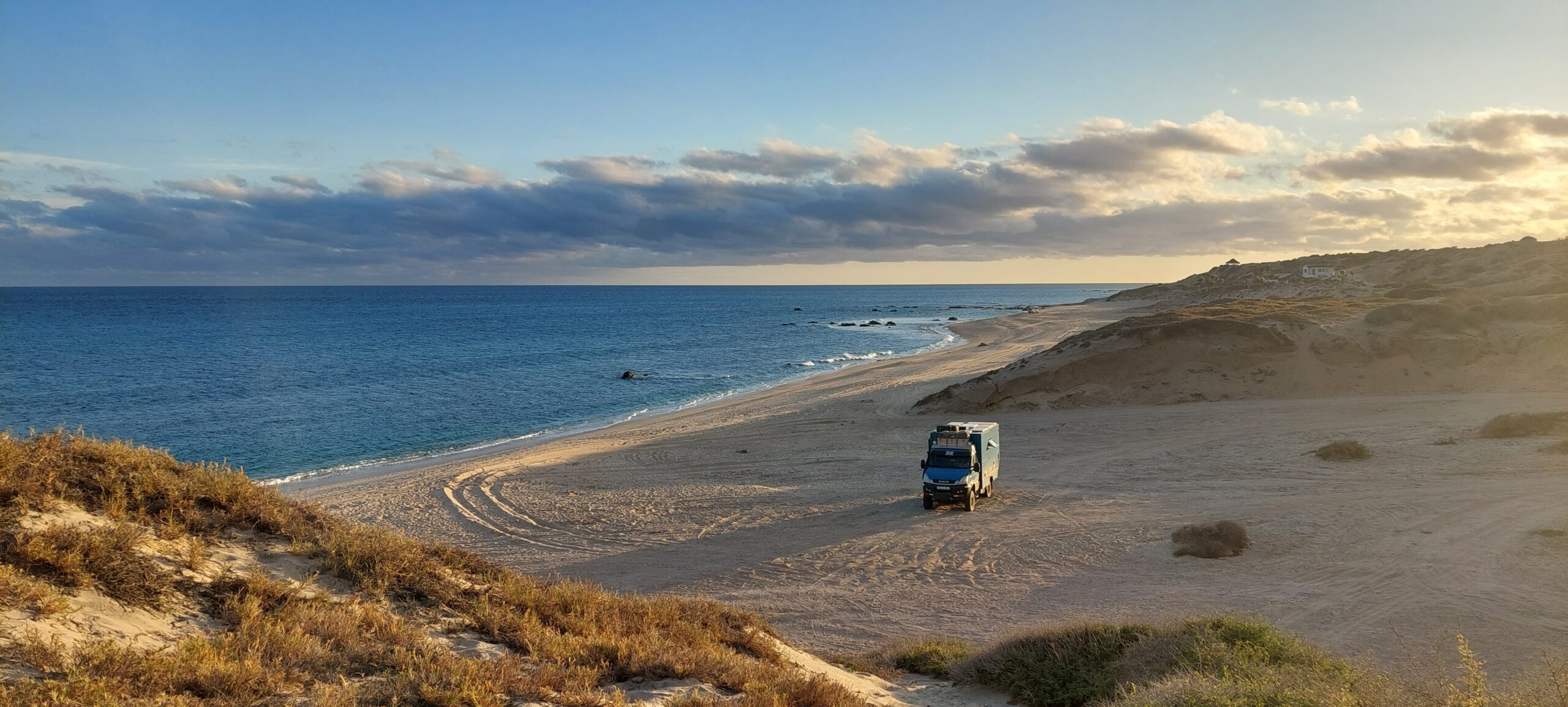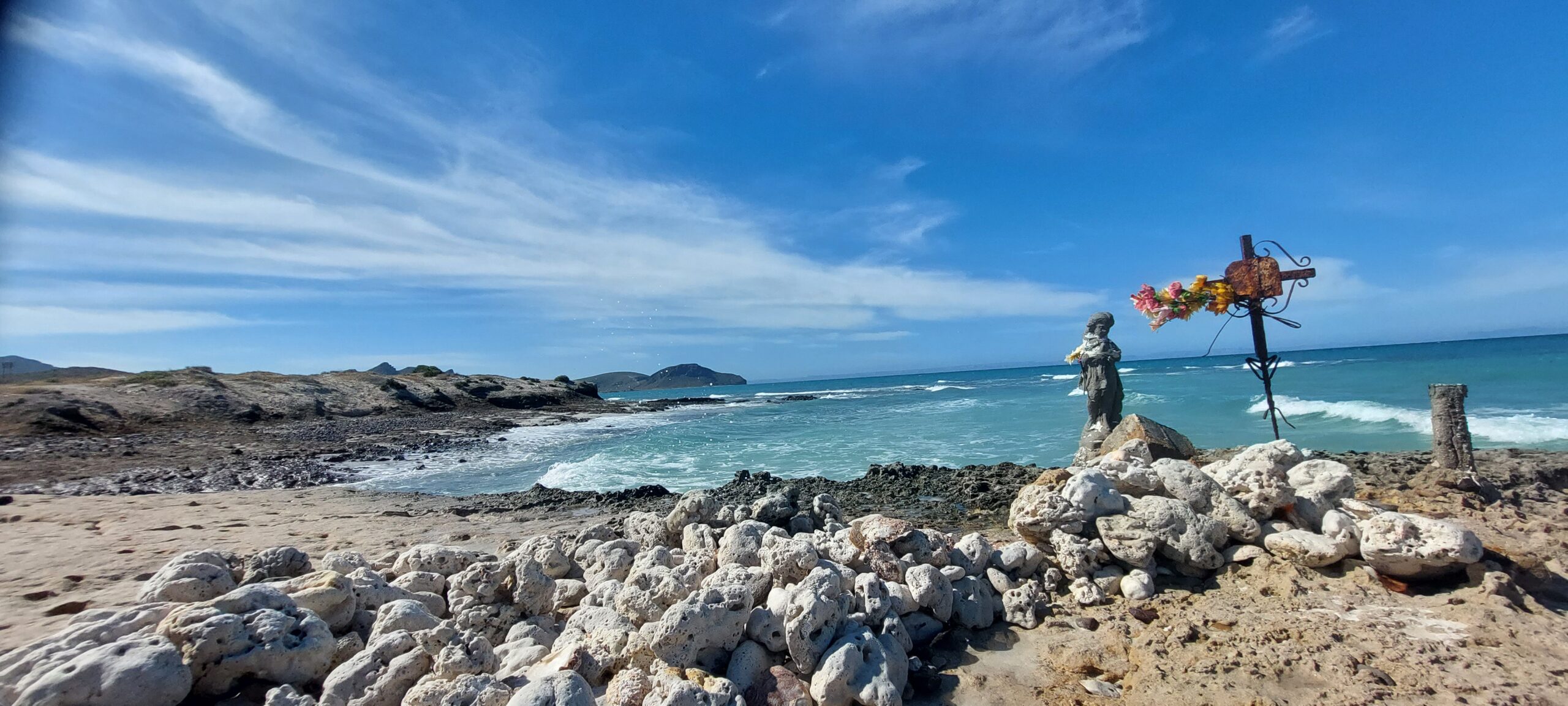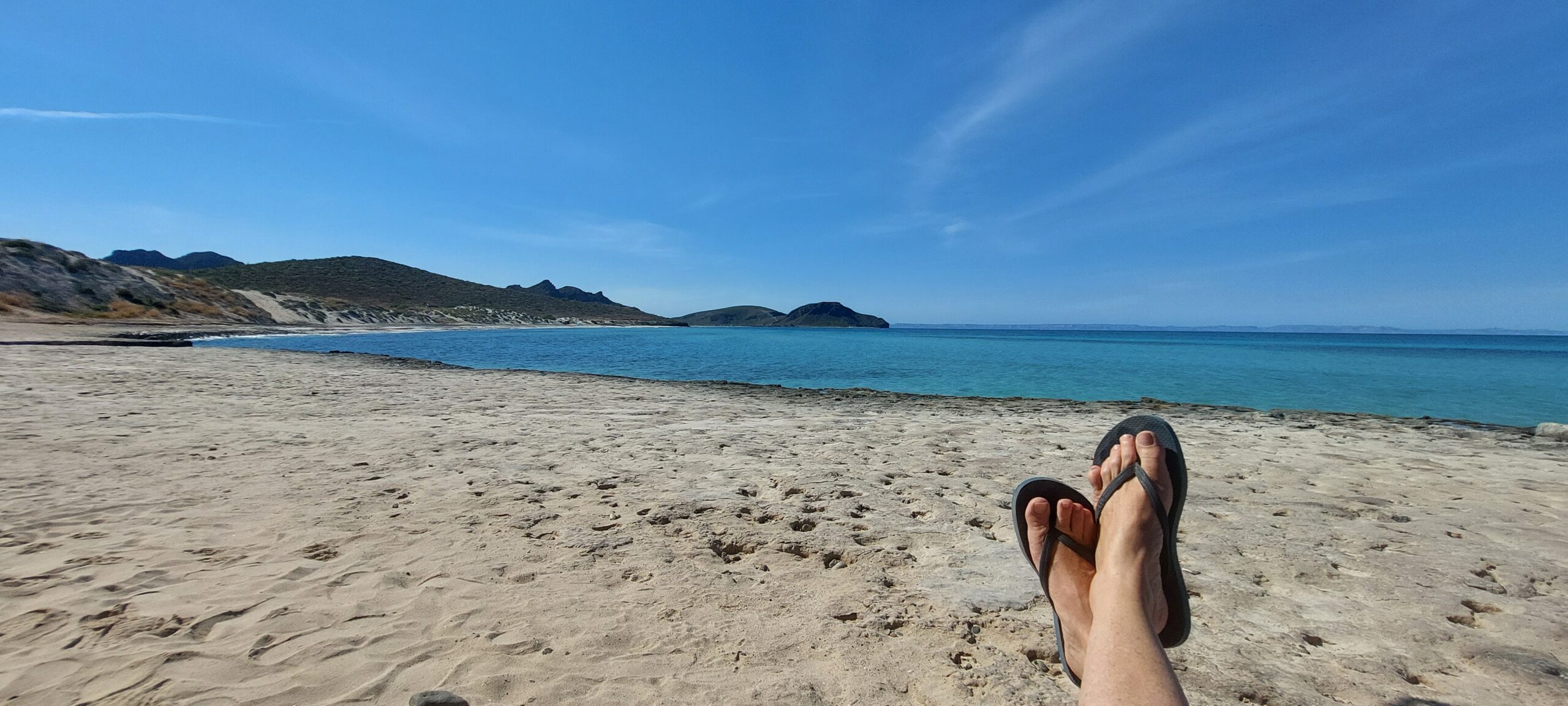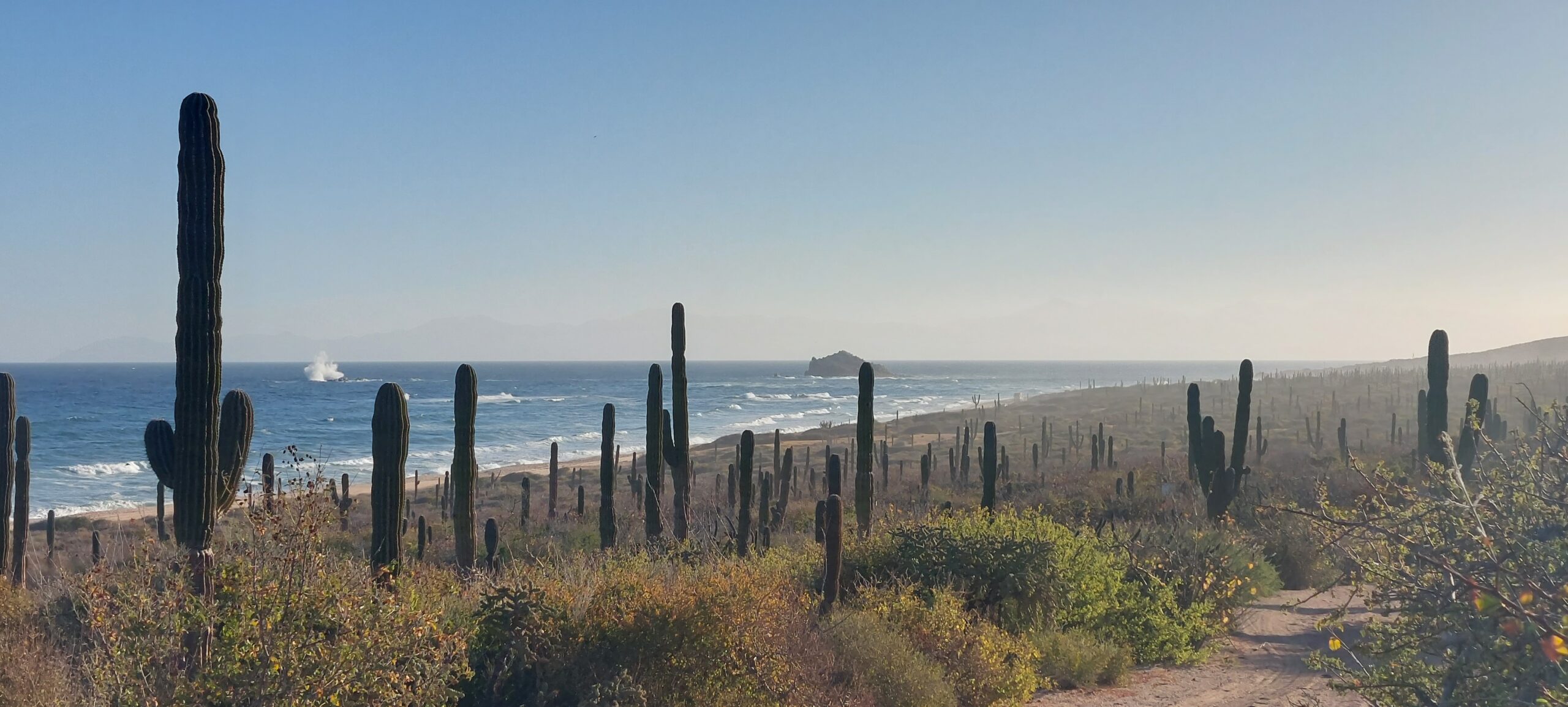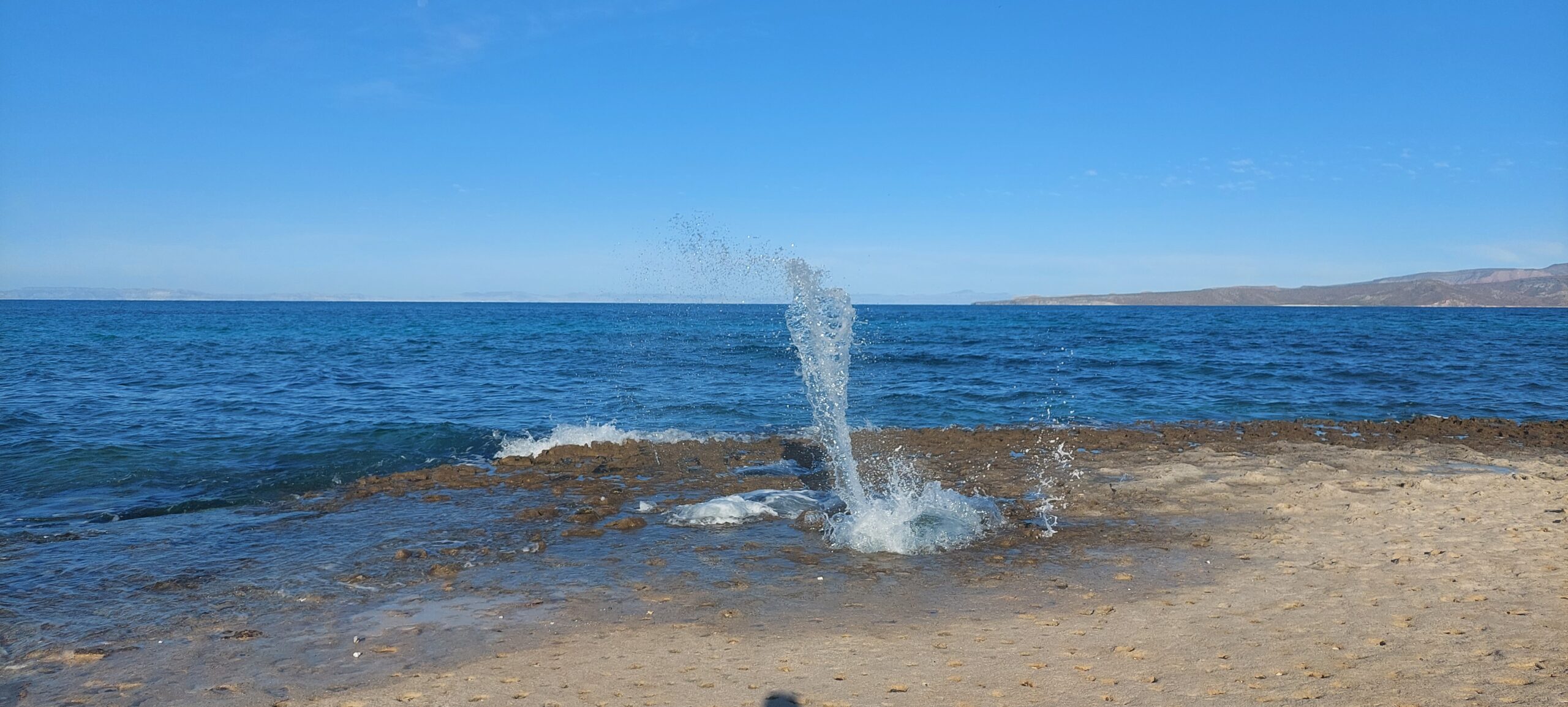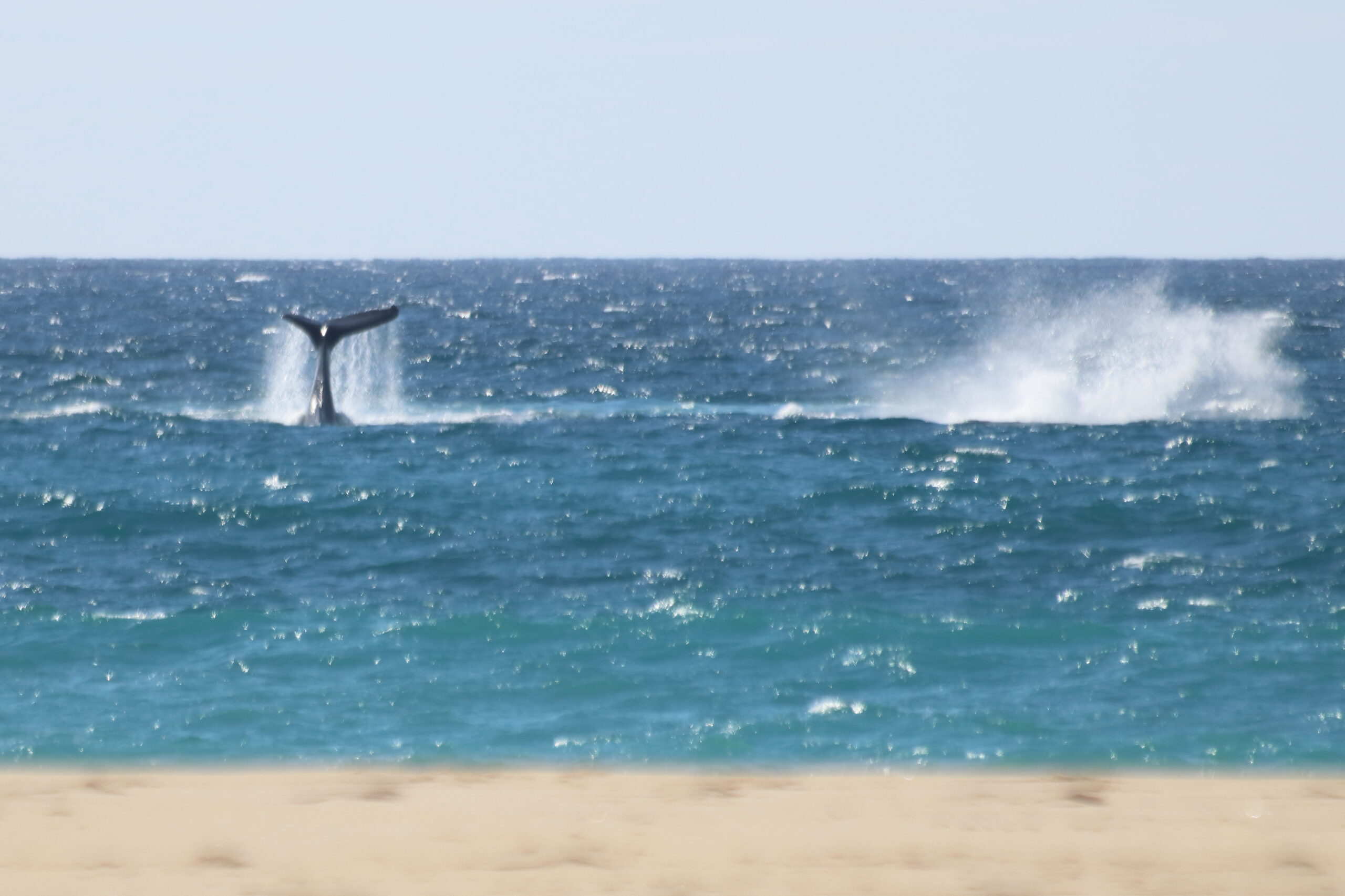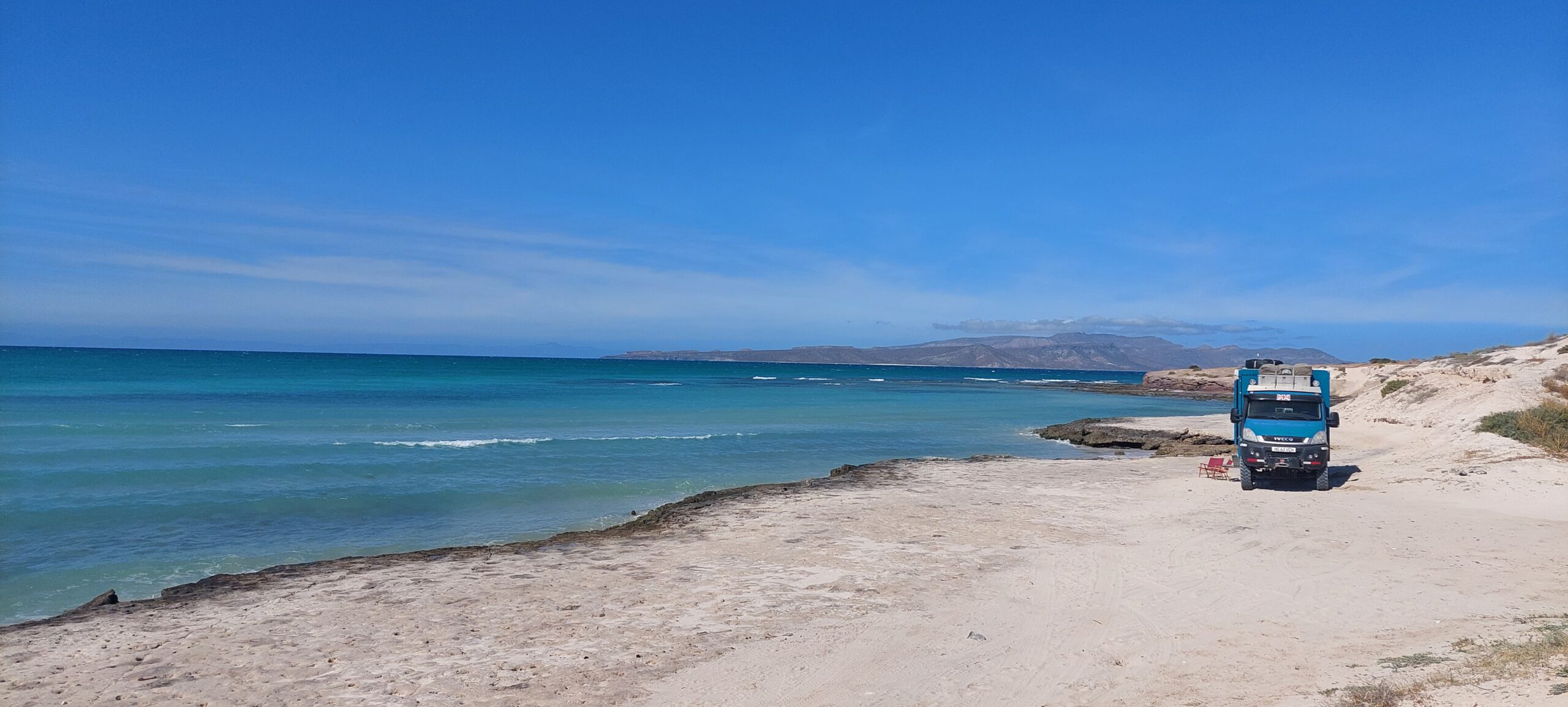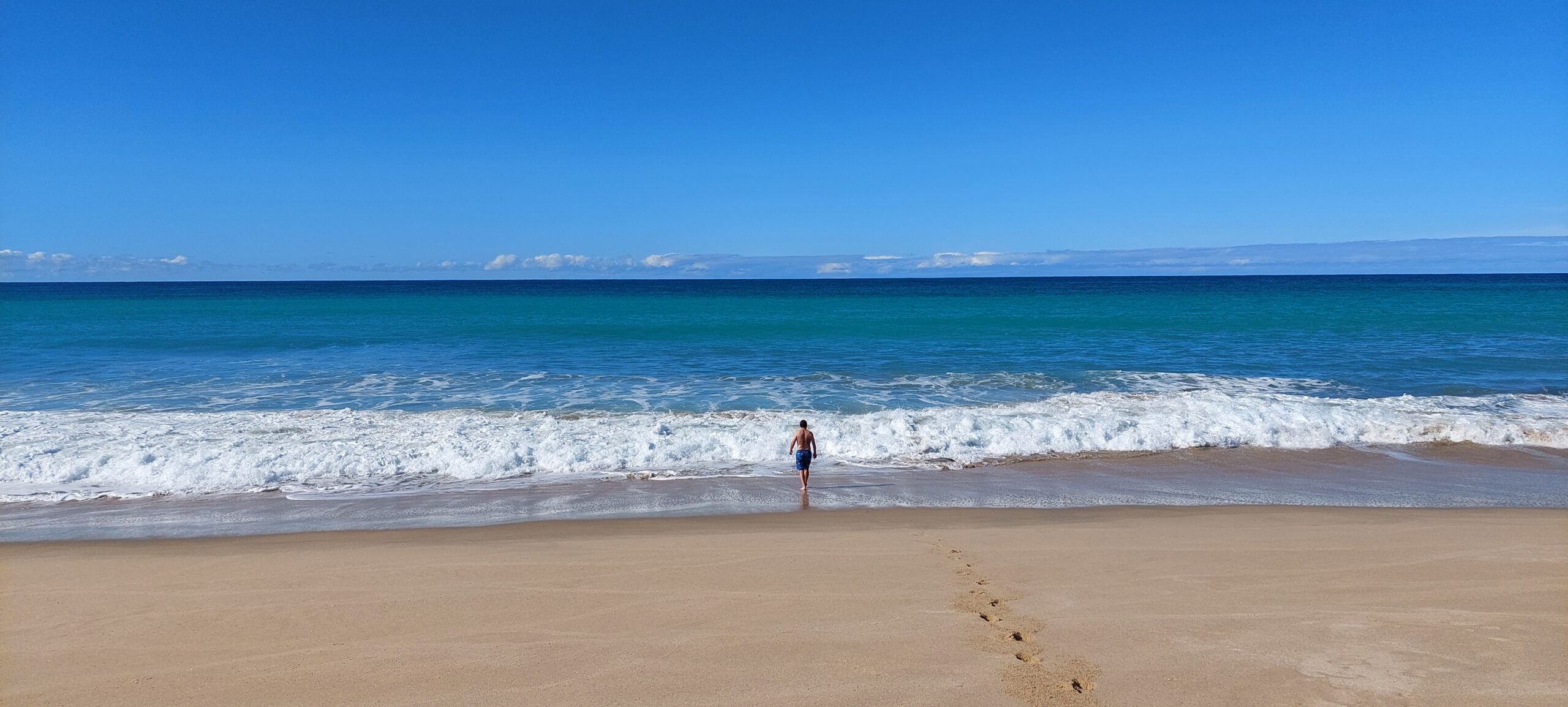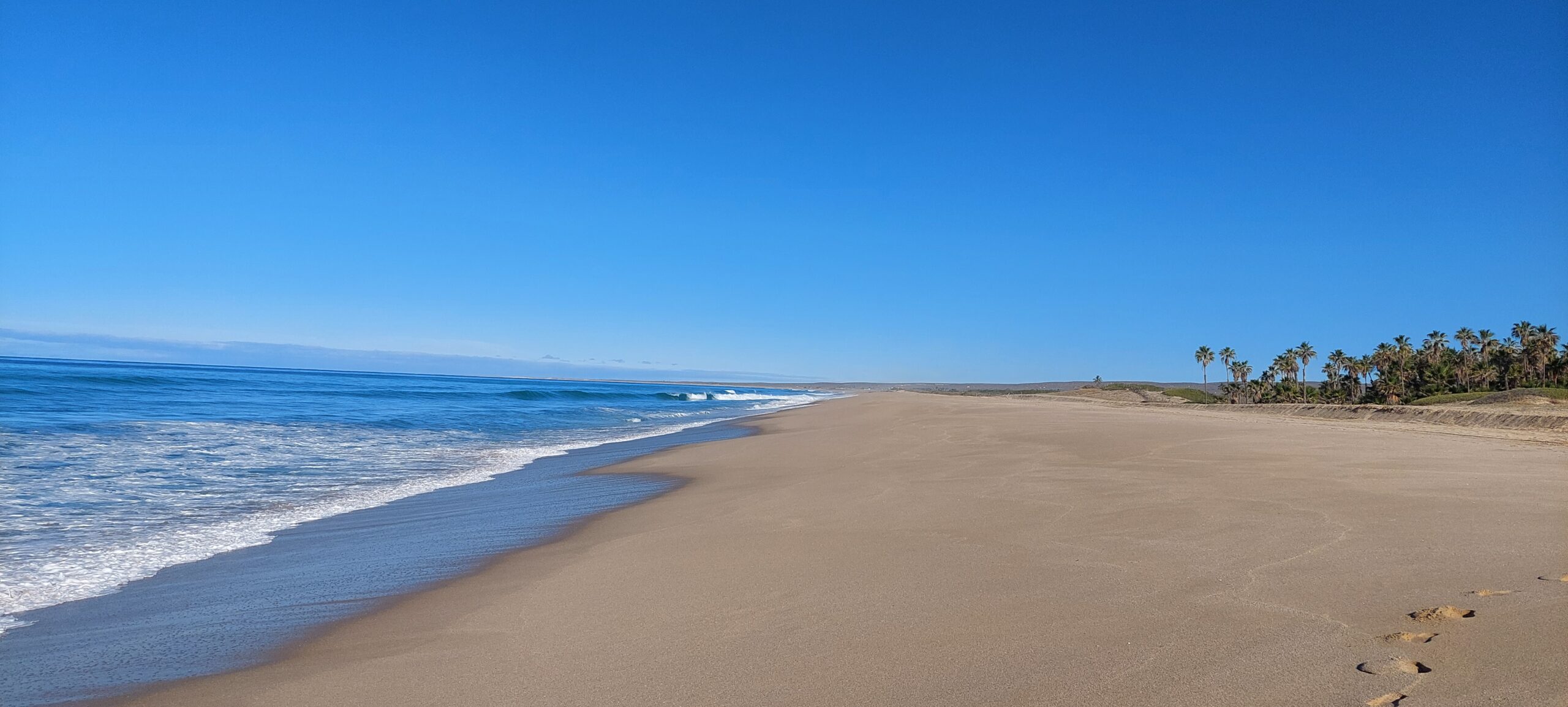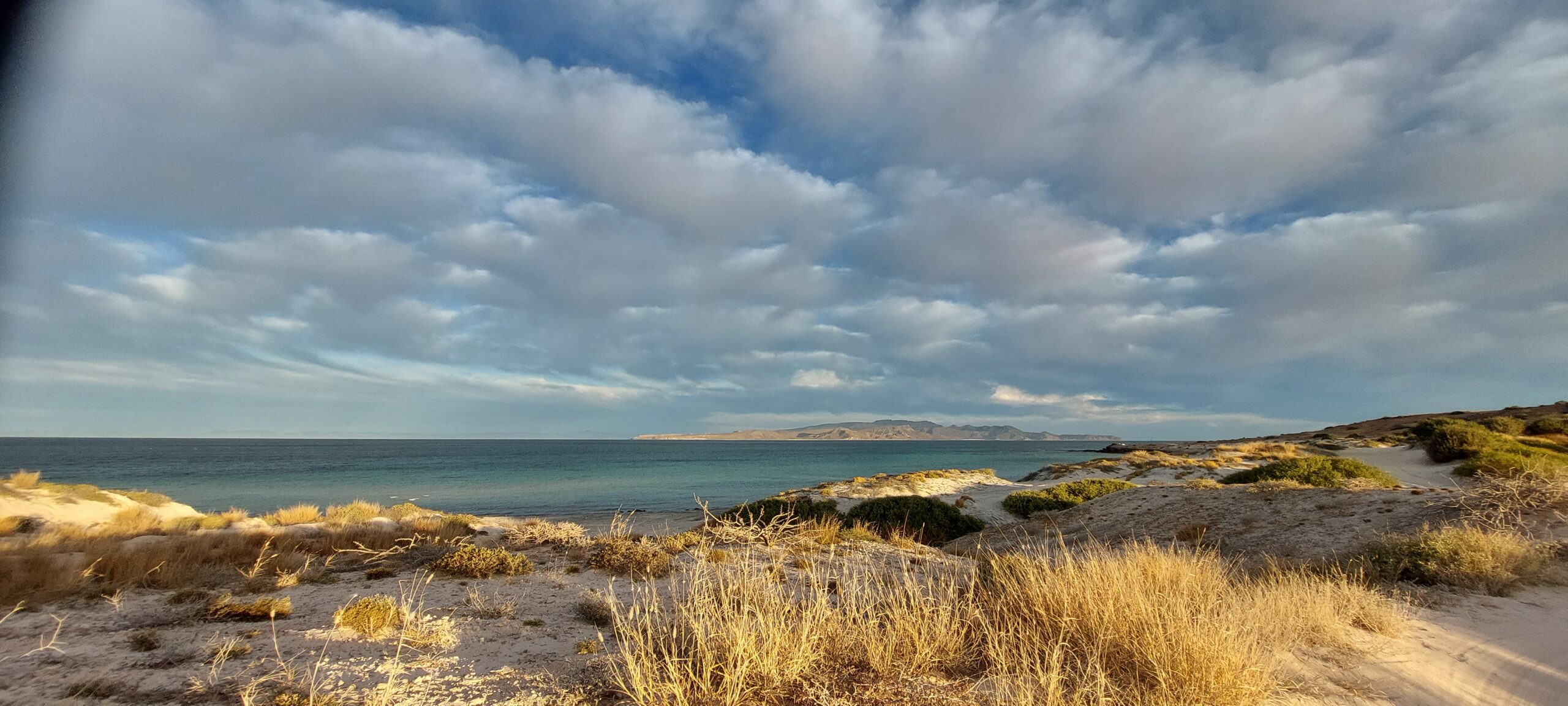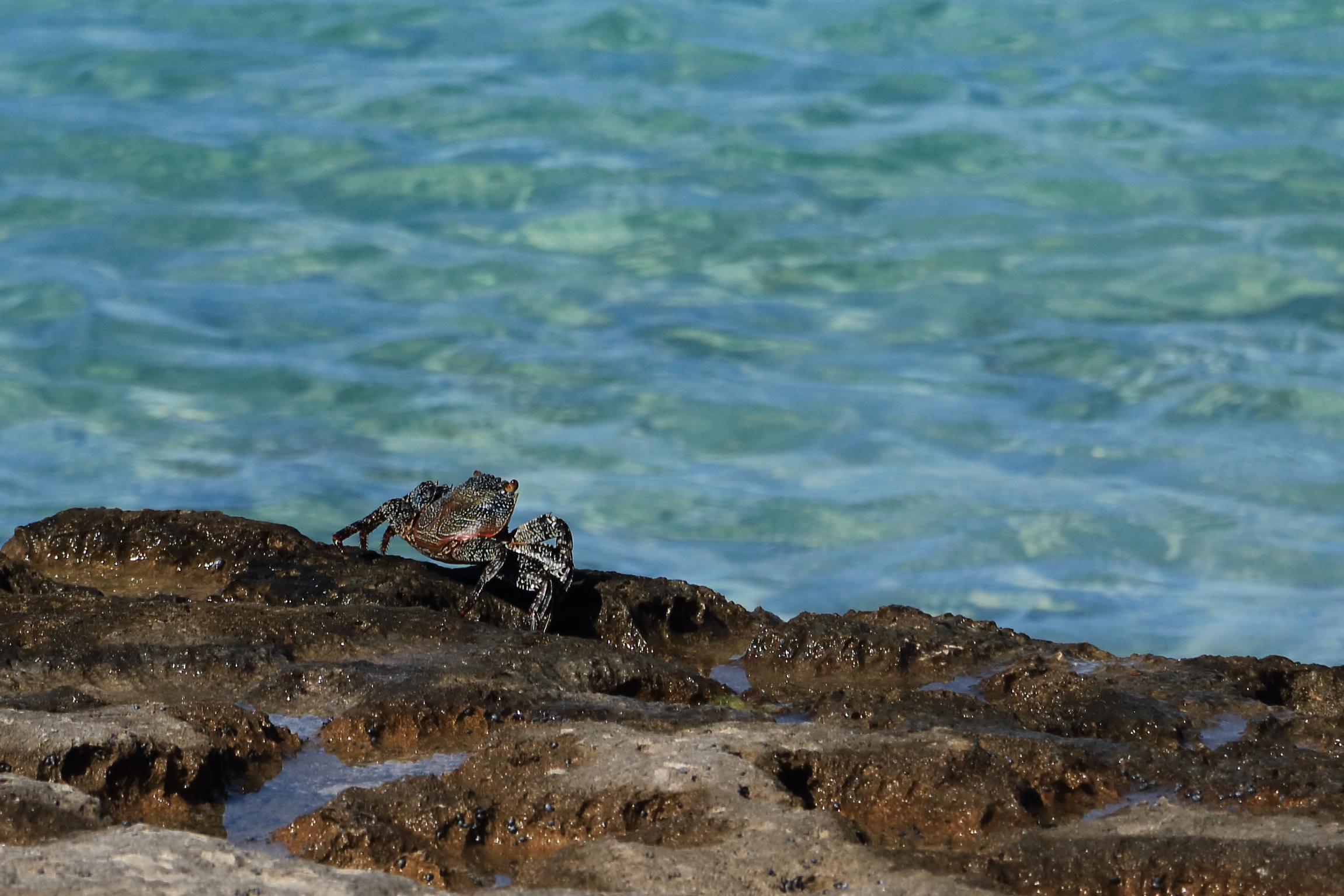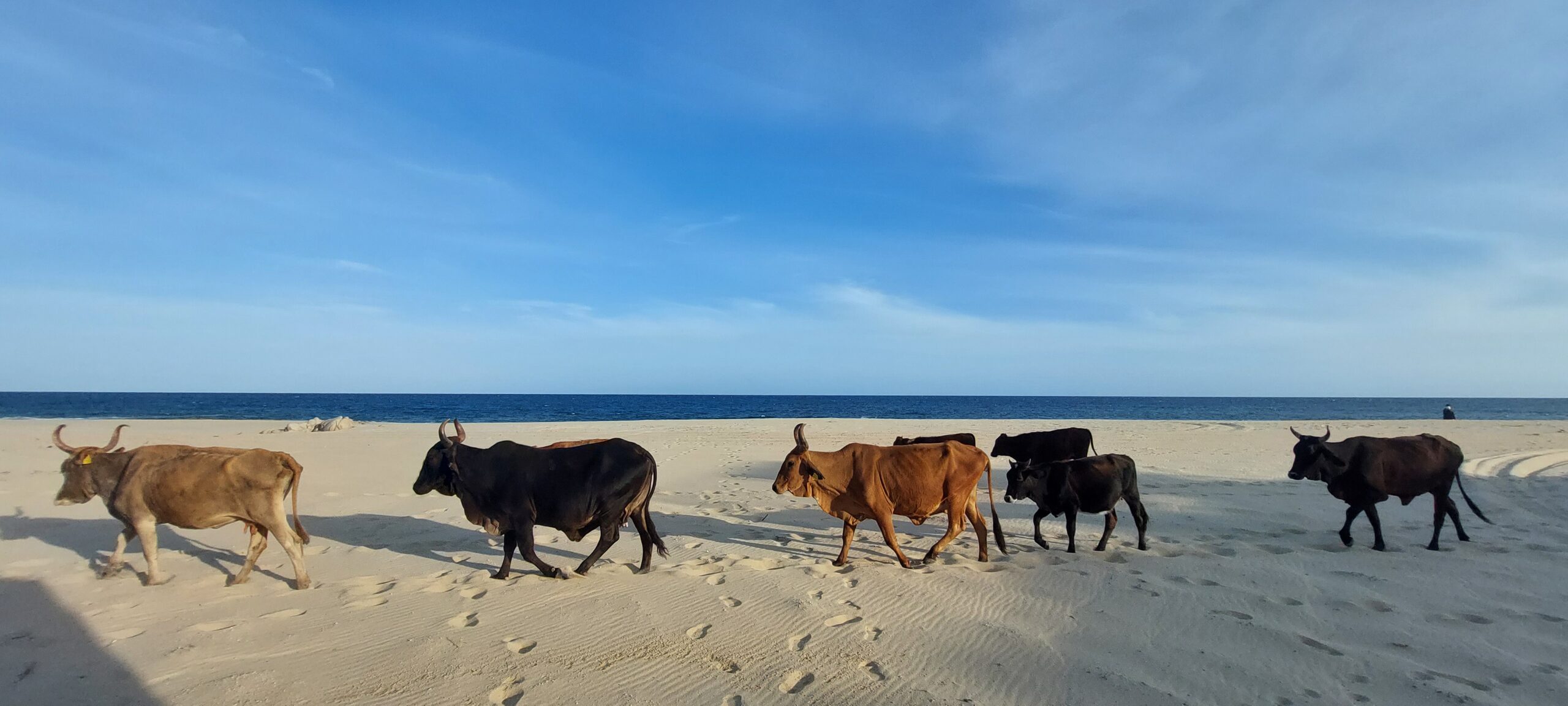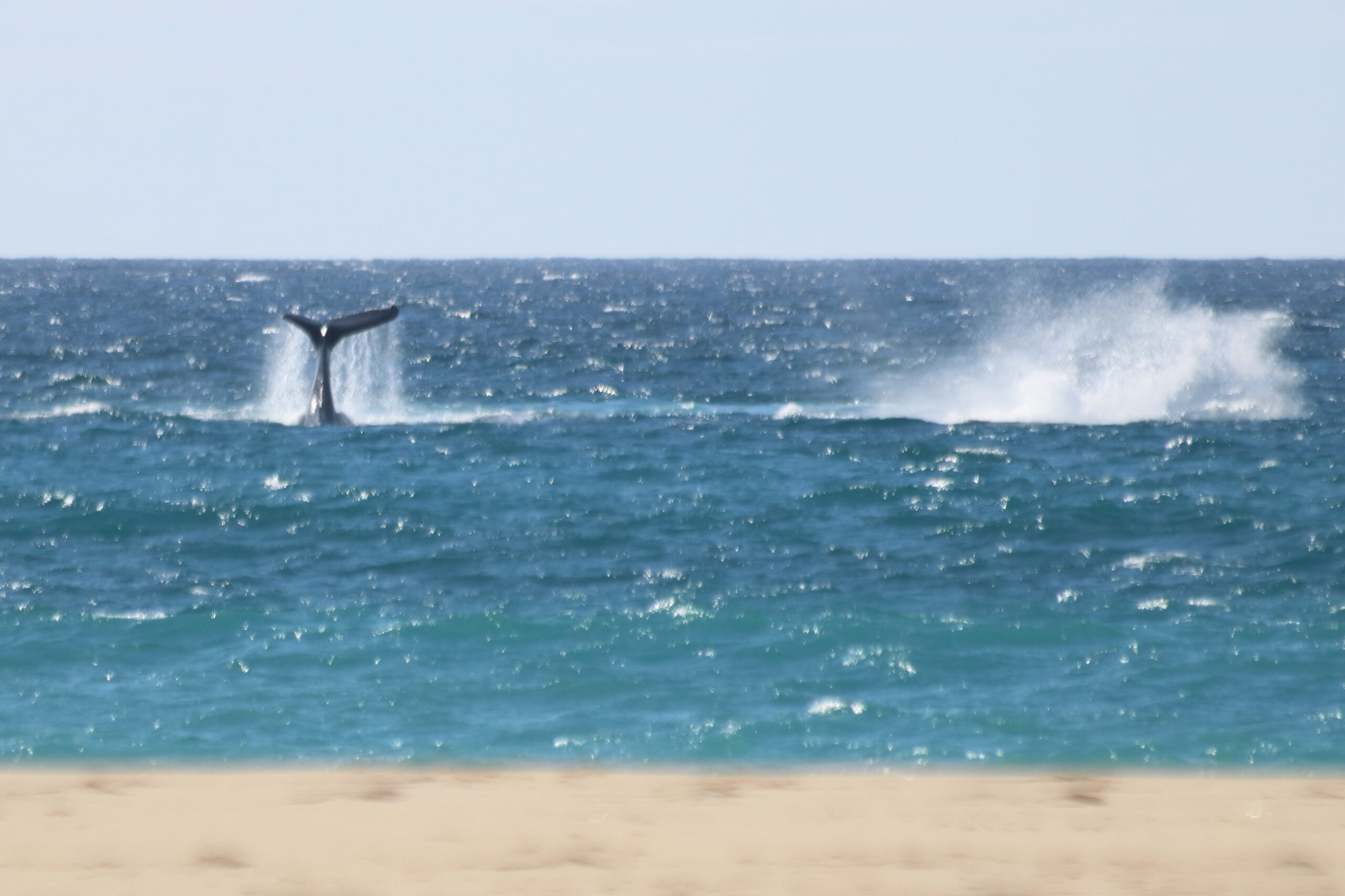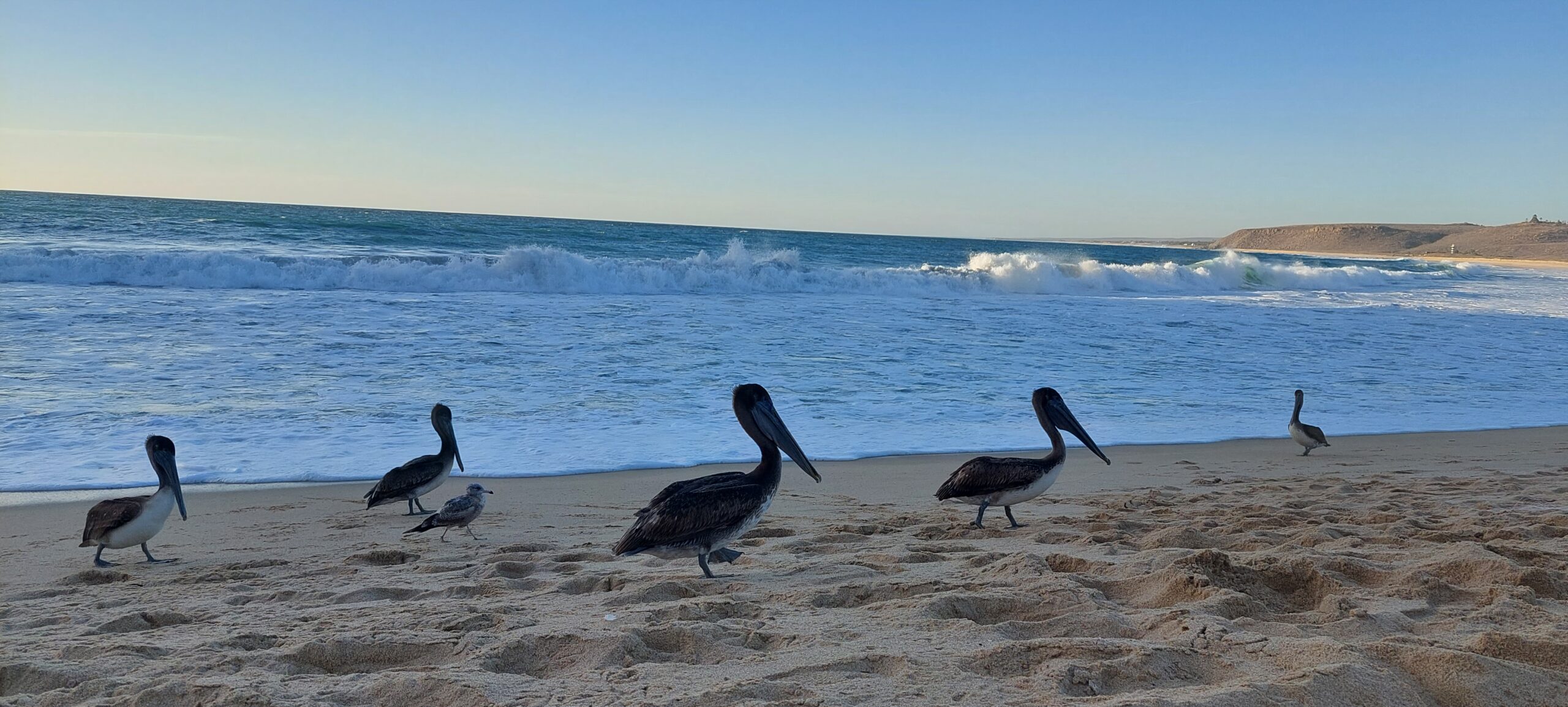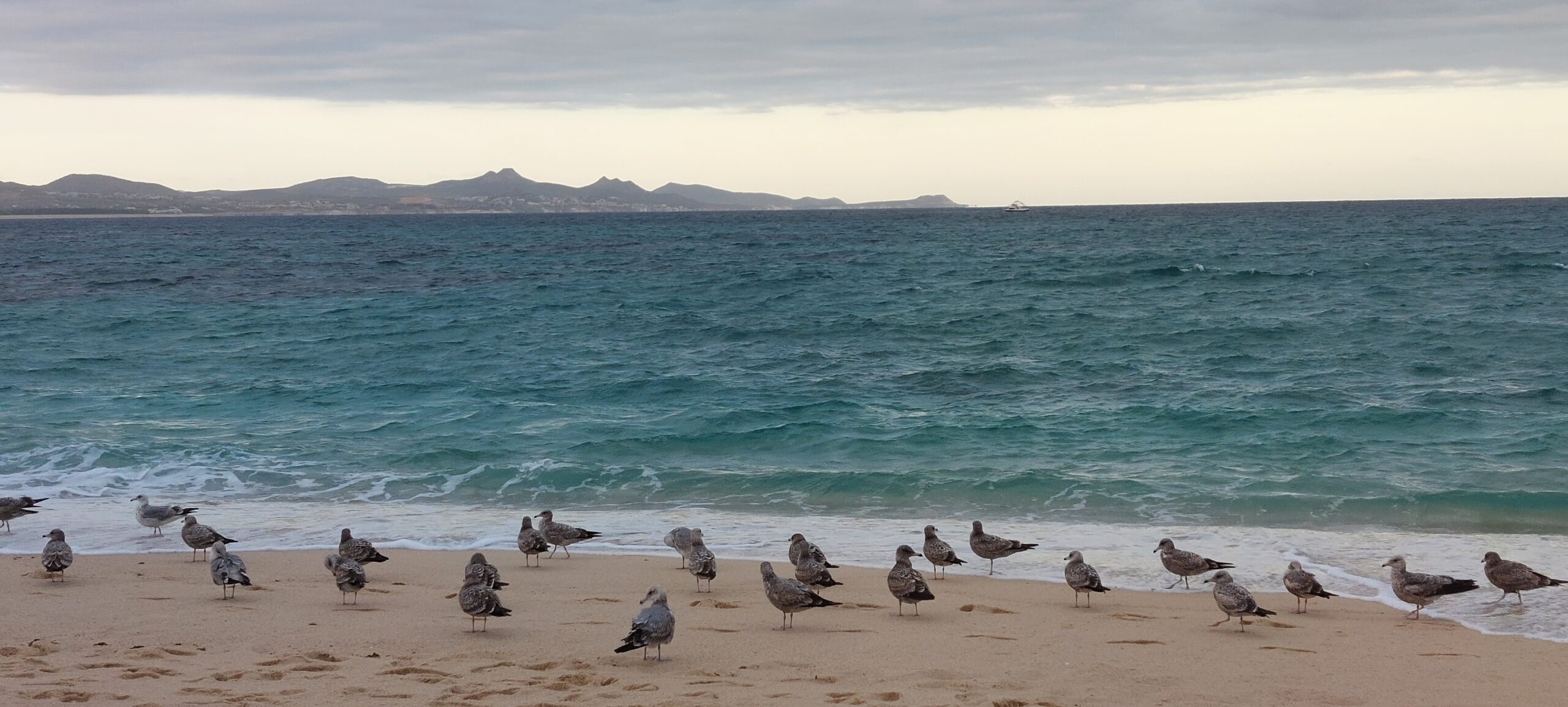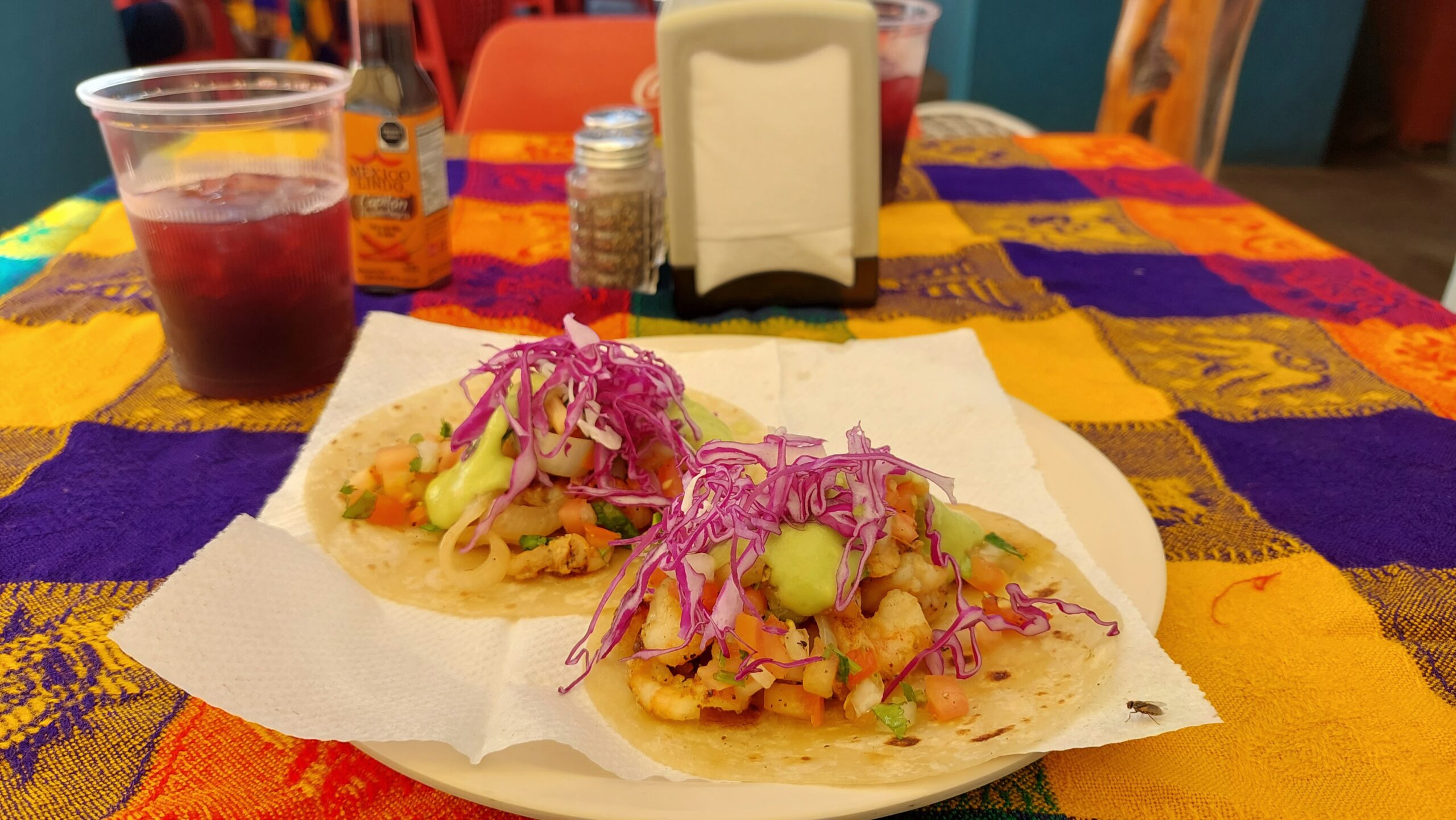Baja California is ‘good’, right? Looking back over our time in Baja it would be very easy to rave on… and on… about how awesome it is. After three months of overlanding there with fabulous beaches, delicious food, sunny skies and great company, we’re finding it hard to leave. But is there any ‘bad’ and ‘ugly’? We found a bit of over-crowding and had a run-in with Mexican corrupt police. Read on for what we hope is a balanced view of the Baja California bad side.

Baja – The Good
This is the easy bit… raving-on about the good things in Baja. We can tell most of our Baja story in a lots of lovely beach photos. We’ve had a fabulous time and would highly recommend it to any overlander.
Baja is easy-going, wild-camping on beautiful beaches is simple, the food is great, local people are friendly, the whale and turtle watching is amazing, and the climate at this time of year is lovely. It’s also very affordable for the traveller from USA/Canada/Europe. That’s not to say that costs aren’t increasing here. Inflation is high, particularly for food. Nevertheless, prices are generally still very reasonable.
Finally, Baja is generally perceived as the ‘safe’ part of Mexico. It’s the bit of Mexico where you’re least likely to get held-up by a cartel-gang wanting your Hershey’s, Twinkies and Oreos. With this perception we take issue because it implies that the rest of Mexico isn’t safe; that is very much not our view or experience. Nevertheless, crime does seem to be low in Baja.
Baja – The Bad
For the ‘bad’ we had to get a bit nit-picky to find things. No place is perfect.
– Numbers
First, the ever-increasing numbers. All forms of overlanding life are down in Baja this winter: from roof-top tents on jeeps, to monster-sized luxury recreational vehicles and everything in between. USA, Canada and most European nations are amply represented. In the popular spots, you can’t move for us overlanders and vanlifers.

There is one plus-side to this: the number of travellers provided some great company. We really enjoyed making new friends and spent a lot of time enjoying cake and campfires with the lovely Michaela and Peter of @exploring509. Then we had the privilege of spending time with some legendary folks of the overlanding community – yes… that means you Luisa and Graeme Bell, Malimish and Overlandsite!! By a fabulous coincidence, we bumped into Swiss overlanders Suzannah and Peter who we last met on a road-side in northern Zimbabwe over 8 years ago! How cool is that???
But the significant down-side to the number of travellers, is that in some parts of the peninsula it’s becoming harder to find beautiful, uncrowded, accessible spots to park-up. The all-alone spots are absolutely still there if you hunt around – we found several. But the days of yore we hear about from the Gringo old-timers, of camping alone in the most iconic Baja spots (around, say, Bahía Concepción) are gone.

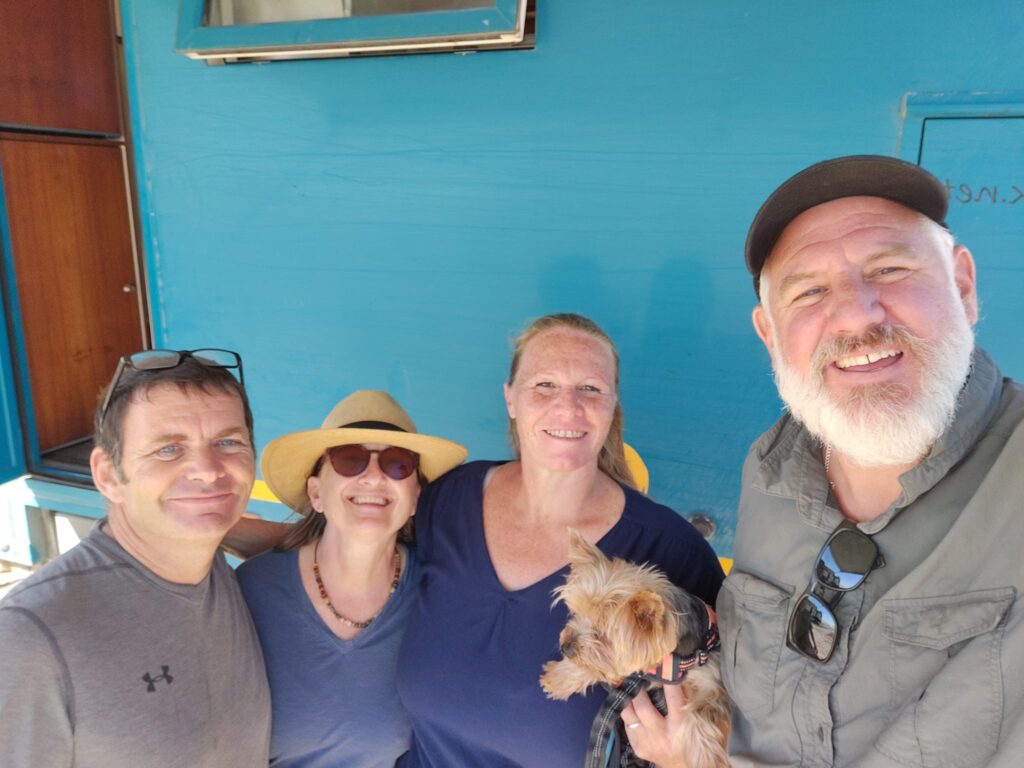
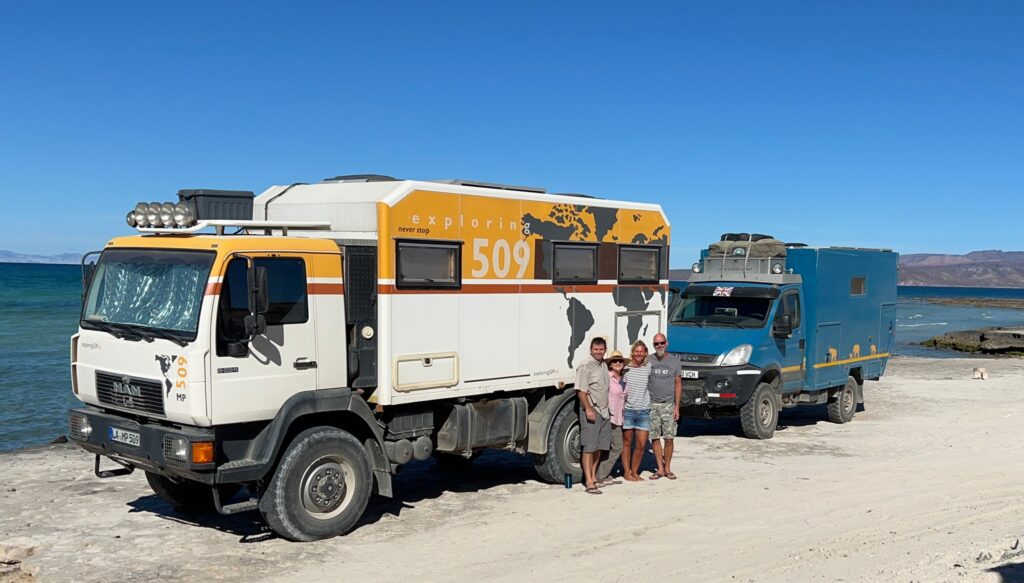
The one good thing with the numbers… great company!
With a high-clearance 4×4 vehicle it’s still possible to reach the parts that regular vehicles cannot reach. You’re most likely to find a great spot if you’re prepared to deflate your tyres and you can handle a bit of rough road or deep-soft-sand. But if you’re planning to do Baja with a regular camper and expect to drop-off the highway for some peace and solitude in a beautiful beach spot, you will struggle. If that’s your rig, be prepared to park-up, cheek-by-jowl, in a long row of campers along the waterside.
– Why so many?
So why are the numbers so high now? Well… in theory, Baja is itself to blame. Word has got out that it’s just so damn attractive! But our thinking is that during the pandemic, many people discovered the work-from-home thing. Then, work-from-home became work-from-beach. We think that chap Elon might just be partly to blame.
Musk and his Starlink is the reason we have travelled for the last two years with portable, unlimited, high-speed internet in remote locations across North America. It wasn’t easily portable in the early days, but the system has improved significantly now. Moreover, in Mexico Starlink is half the price of USA/Canada, so it’s even more affordable for people to come here and work-from-beach without hunting around for mobile phone signal. Without exaggeration, we’d hazard a guess that around 80% of the rigs here have a Starlink dish outside. And that’s not including the rigs which, like us, have it mounted in a non-visible location on their roof-top.

Whatever the reason for the numbers, it’s clear that Baja cannot go on indefinitely accommodating these ever-increasing numbers of people in vans crammed onto beaches. Something’s got to give. On Pastora Beach just north of Todos Santos, there has been some conflict between the overlander/van-lifers and the locals. Locals have made it clear these numbers are not welcome. This local conflict is likely to spread to other popular park-up spots and we wonder how Baja will deal with this in the coming years.
– Pushing the Limits
As a result of the increasing numbers, some overlanders are pushing the limits of their vehicles, going the extra mile to get to the less accessible spots. I’m sure this exploration was always the case, but now more people are encouraged to give it a go… just a teeny bit further… just around the headland to the next bay.
Of course, like others with decent off-road vehicles, we took full advantage of Cuthbert’s capabilities to explore. Unfortunately, not all overlanding vehicles have the capability their drivers believe (or would like) them to have. Their vehicle is just not up to reaching that next bay. And even if it can get there, can it get back??? We’ve helped several people in ‘regular’ vehicles get out of spots they really should never have got into. Some campers we met in Agua Verde had made it down the long, steep, rough hill to the lovely bay at the bottom, but admitted they were a bit worried about how they might get out when they want to move on.
Another consideration critical with beach camping in some of the quiet spots, is the tidal range. I’ll digress here slightly with a story of a French family we met with a regular road-going camper. Wanting to get away from the crowded popular spots, they parked-up near us on a more remote beach. Their rig wasn’t capable of reaching the slightly higher soft-sand that we were on with @exploring509, so they parked in the lower, firmer-looking part of the beach. All looked good until, on Day 3, there came a particularly high tide. They got up in the morning to find their rig standing in salty sea water. Of course, it’s not polite to laugh at misfortune 🙈, but what did amuse us was their chilled attitude: they just took-out their deckchairs and sat ankle deep in the water outside their camper, drinking coffee!
Had that been our Cuthbert stuck in salty mud, we’d have been in action-stations (that’s a technical term, slightly short of ‘panic-stations’!) rushing around working-out how to get out as quickly as possible. Not these chilled-out guys! Their kids came out to play all day in the new salt-water pool surrounding their home. Not until around eight hours later did they start thinking about getting out of the swamp.
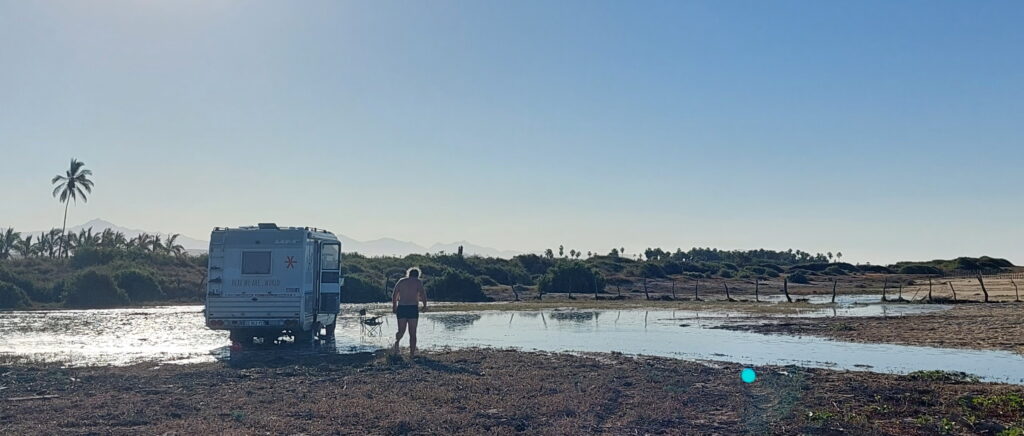
They had no recovery gear and no idea how to get themselves out. Eventually with our sand-landers providing grip, our friend Peter used the awesome power of his big-rig to haul the French travellers out of the salty mud. They were grateful for the help, but with a classic gallic French shrug of the shoulders, they didn’t seem to be committed to not doing it again somewhere. Why restrict themselves when there are other travellers around to rely on for recovery equipment and assistance? And it gave them a great YouTube story opportunity for their thousands of followers!
– Other gripes
Now we’re really struggling to add to the ‘bad’ list. Ah… yes… one (avoidable) thing that springs to mind is the ever-increasing Gringo-culture in cafes and restaurants. There are places with menus in English and visitors expect to pay in US dollars. Seriously??? Yes, really. Can you imagine if Mexican visitors to the USA expected to pay for goods in pesos? 😂 But this is really a minor and avoidable thing – eating where locals eat avoids this whole palaver.
What else can we find to moan about? Water? Hmmm… fresh, natural water is in short supply in Baja. In stark contrast to the mainland, finding a water tap where we can attach a hose to fill our water tank is difficult. But it’s no biggie. Instead, we go to ‘agua purificadas’ (purified water shops) to buy water by the 5 gallon bottle. It’s a very reasonable price and the guys are always happy to bring the bottle outside to the truck so that we can use our own little pump to transfer the water into Cuthbert’s tank.
Baja – The Ugly
As with the ‘bad’, it’s hard to find things to say here. But we do have one ugly example.
In Todos Santos a policeman stopped us for (allegedly) driving the wrong way down a one-way street. There were no signs indicating the one-way and there were cars parked pointing in both directions. Okay, we thought… let’s give him the benefit of the doubt… we’ve broken the law. If so, we need to pay a small fine and get an official receipt. But no. This guy, after inspecting Marcus’ driving licence wants to keep it. Apparently, we had to go to La Paz (80km away), pay the fine, then come back here to recover the licence. Or… surprise, surprise, we can just pay him 1,000 pesos (around £43) in cash here and now, and the matter will be resolved. Ha, ha, ha. Not falling for that old chestnut, fella!
Calling his bluff and appearing to take him seriously, we put on our sad/worried faces. “Oh dear…” we said “… as we’ve broken the law, we’re required to report to our Embassy what we’ve done wrong, providing a copy of the fine receipt to prove we’ve complied with Mexican law and paid the legal penalty”. Shuffling around, looking for pen and paper… “We need please your name/number and full details of our offence”. His face fell… “okay…” he said “… consider this a warning and you can drive on”. Done.
According to that font of reliable knowledge, social media, this is an everyday occurrence all over Mexico. But since 2018 we have spent well over a year driving all over the country, touring all but one of the States of Mexico. Only now, in Baja California Sur, have we had our first attempted bribe from a corrupt police officer in Mexico (in fact, in our 9 years overlanding, we have had only one bribe attempt in Peru and one in Zimbabwe. That’s it!). On social media there are never-ending discussions about why they do this, with possible excuses: they’re under-paid; most Gringos pay-up instantly so it’s easy money; or it’s an unofficial ‘tourist tax’. Say what you like… but it’s dishonest. It gives a bad impression of the otherwise awesome Baja. It’s not reflective of the generally wonderful Mexican people. And above all, it’s ugly.
Moving on from Baja California the bad side
We hope we’ve made clear that the ‘bad’ and the ‘ugly’ parts of Baja are minor; far out-weighed by the ‘good’. And as we’ve said in several previous blogs, the reason any place is crowded is because it’s good! If it wasn’t good, fewer people would go there! In our view, Baja is still worth it if you find the right spots!
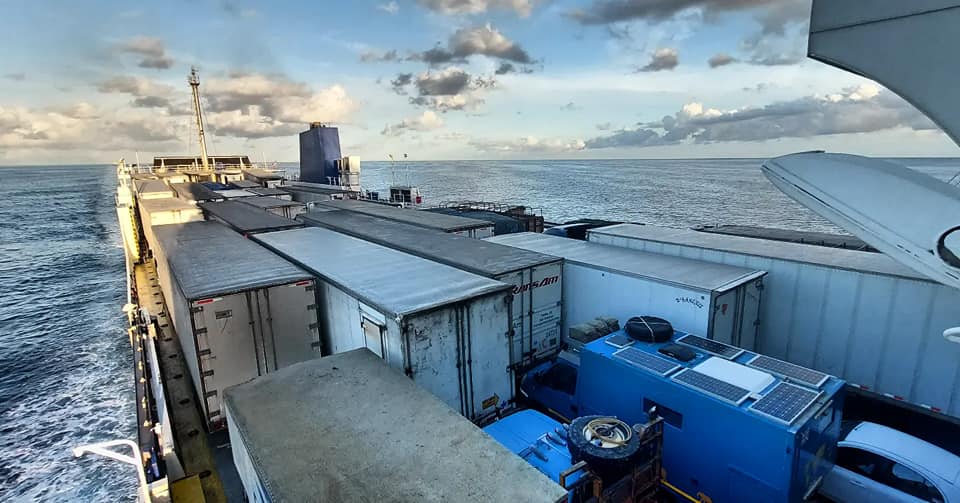
Now we’ve taken the ferry out of Baja from La Paz to Mazatlán. Tune in next time folks, for tales from the Mexican mainland.

